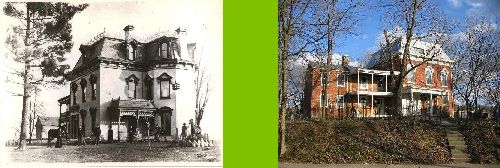I know what's on my wood (since I put it there) but do you know exactly what is on your woodwork or floor? I found some recipes in my new Bible for old house renovators; "Lees's Priceless Recipes" published in 1895. These may open your eyes a little.
Cheap Oak Varnish
Clear pale resin 3 1/2 pounds, oil of turpentine 1 gallon; dissolve. It may be colored darker by adding a little fine lampblack.
Varnish For Woodwork
Powdered gum sandarach 8 parts, gum mastic 2 parts, seed lac 8 parts, and digest in a warm place for some days with alcohol 24 parts, and finally, dilute with sufficient alcohol to the required consistence.
Dark Varnish For Light Woodwork
Pound up and digest shellac 16 parts, gum sandarach 32 parts, gum mastic (juniper) 8 parts, gum elemi 8 parts, dragons blood 4 parts, annotto 1 part, with white turpentine 16 parts, and alcohol 256. Dilute with alcohol if required.
The source of the resins are generally trees and would be the sap or bark. Reading through several of the recipes, common resins used were amber, copal, sandarach, camphor, mastic, anime, elemi and dragons blood (which has a dark red color). I wouldn't know where you could buy this stuff today!
Back in "The Day" there weren't penetrating wood stains like we use now. The varnishes were colored and translucent allowing the wood grain to show through the finish. So, if you plan to refinish your woodwork and want it to look like it would have in the original condition, don't use stain and polyurethane because all you end up with is a coat of plastic varnish over colored wood. You would do better to use a topical stain/varnish combined or do what we have done (and many other houseblog readers), use amber or colored shellac over natural or stained wood. You can wipe polyurethane over the varnish to protect it when you are done.
If you are fixing up an old house, any books giving recipes for paints and varnishes are a good resource because you gain an understanding of what you may be dealing with in your particular work. They also give you an understanding of what items are used in modern concoctions bought from store shelves. Now when you read the words "Resins" in the ingredients, you will know what those resins may be. Some of these same resins are used in medicines and incense but don't go around drinking varnish or inhaling aromatic smoke if you get a cough!

1 comment:
What's on our wood? Linseed oil, a secret recipe of stain, blood, sweat and a few tears. Oh and a lotta love :)
Post a Comment